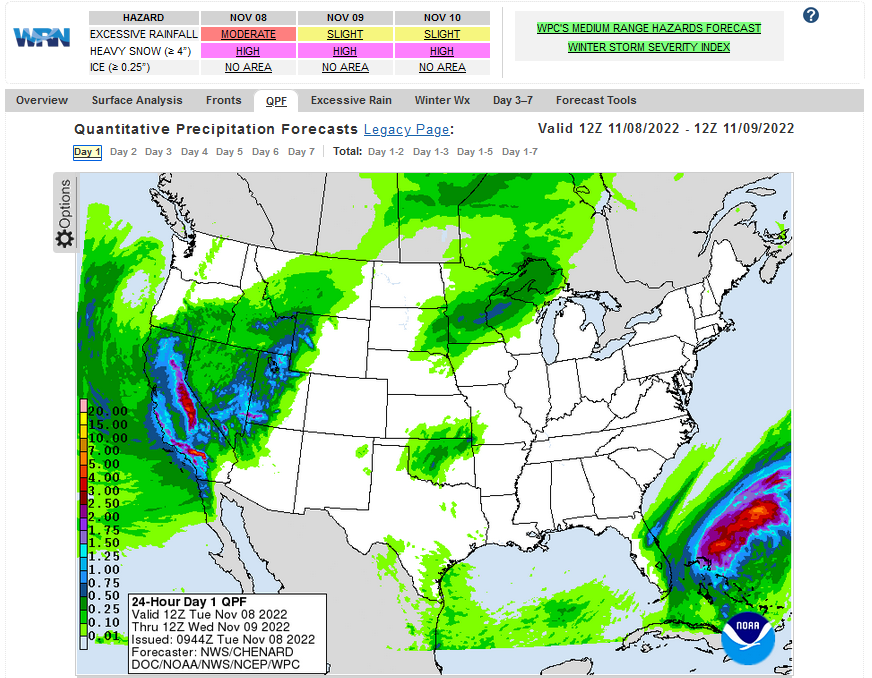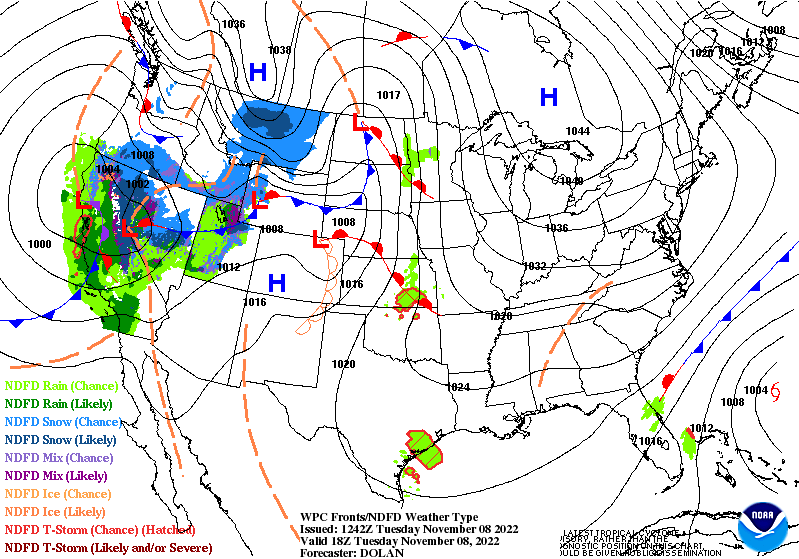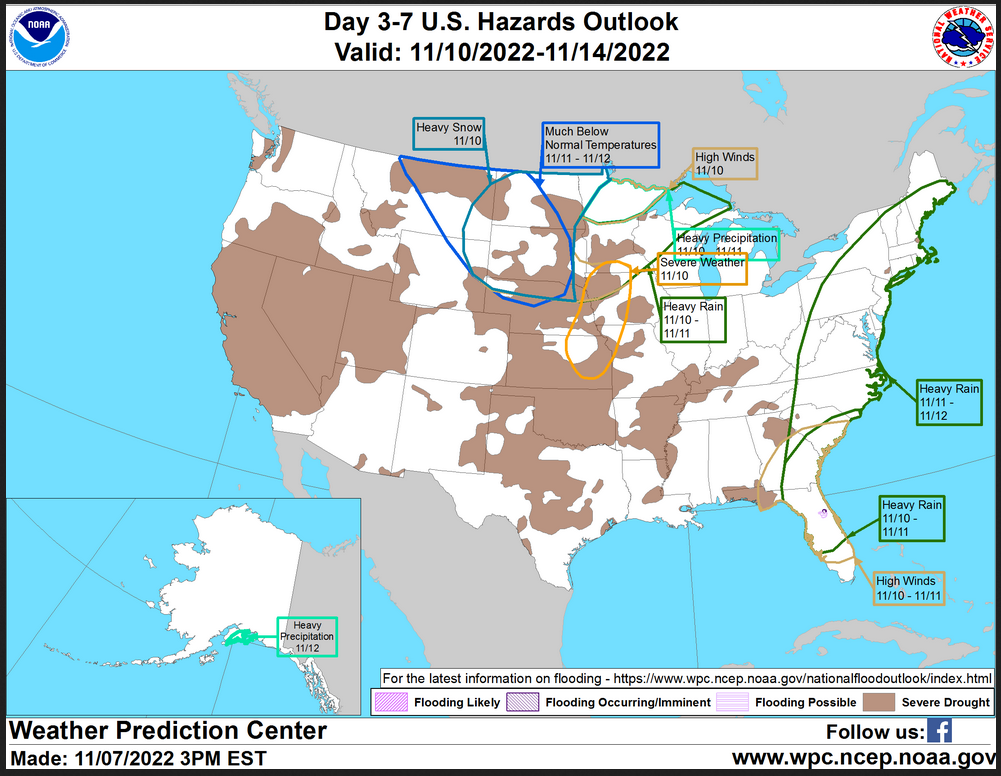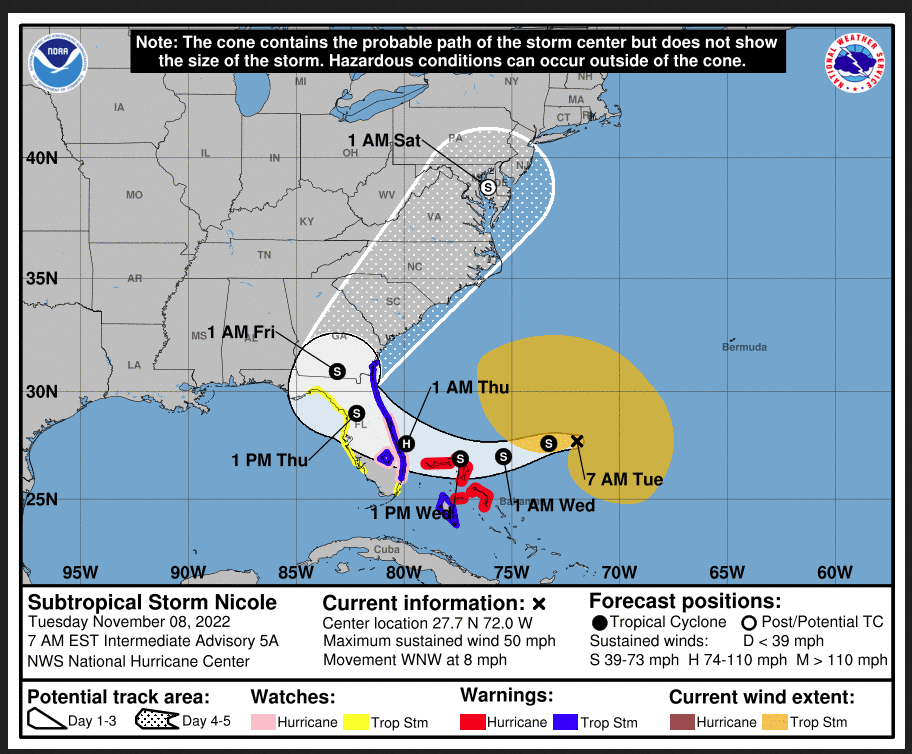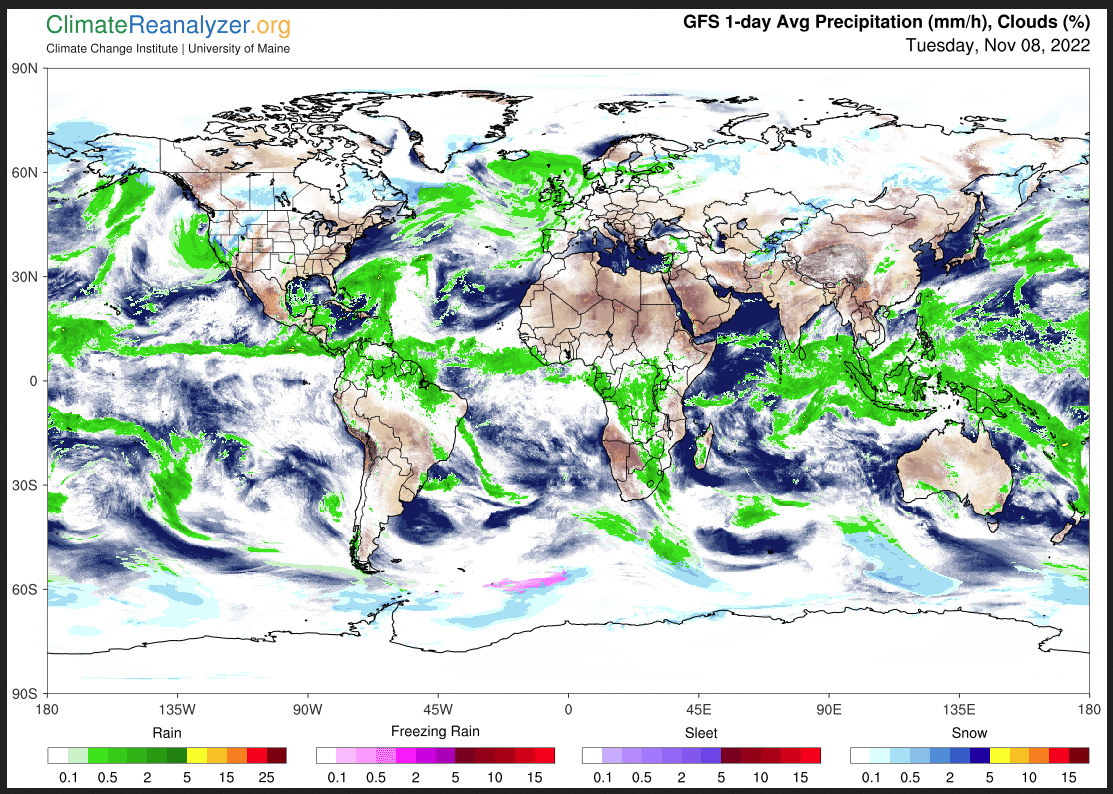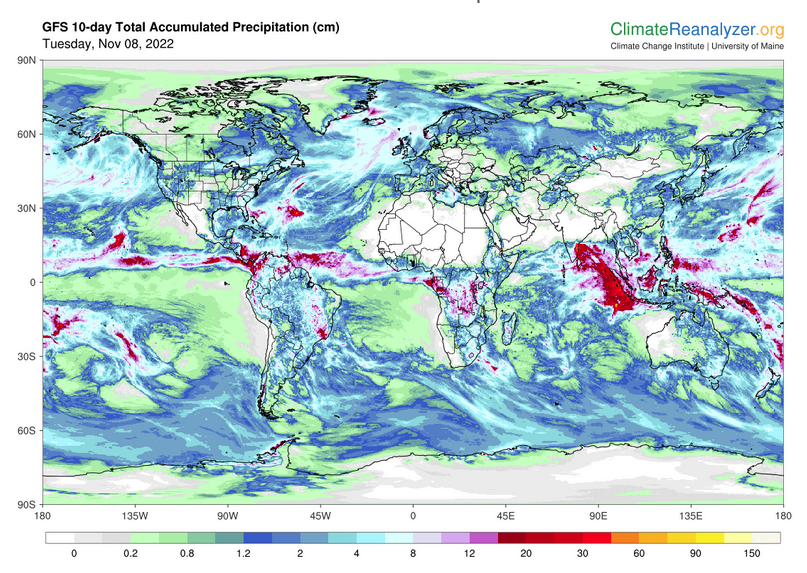Here is what we are paying attention to this morning and the next 48 hours from this morning’s NWS Forecast.
...Heavy rain and flash flooding likely across parts of southwestern California today... ...Heavy mountain snow to continue through Wednesday for the Sierra Nevada, Intermountain West, and northern Rockies... ...Impacts from Subtropical Storm Nicole expected to begin late today in eastern Florida... ...Heavy snow and blizzard conditions possible for portions of the northern High Plains, Great Plains, and Upper Mississippi River Valley Wednesday through Thursday...
Continuation of the NWS Short Range Forecast (It is updated twice a day and these updates can be found here.
A deep upper level low over the western U.S. will continue to drive active weather across most of the region through mid-week. Several frontal boundary will pass through, supporting widespread precipitation, falling as rain at lower elevations and mixed precipitation and snow at mid and high elevations. Anomalous moisture will focus over California today as a low pressure system slides down the coast. There is a Slight risk of Excessive Rainfall (level 2/4) in effect for a large portion of southwestern California with a smaller embedded Moderate Risk (level 3/4) for the Transverse Ranges from Los Angeles into southwestern San Bernardino counties. Heavy precipitation will likely lead to flash flooding, especially near steep terrain and burn scars. Rapid runoff may also lead to isolated flash flooding in urban areas along the coast. In the higher elevations in California, heavy mountain snow is expected, and Winter Storm Warnings are in effect. Precipitation will spread from California through the Intermountain West and northern and central Rockies today and Wednesday. Heavy mountain snow will be possible across higher elevations, and widespread Winter Weather Advisories and Winter Storm Warnings are in effect. A strong cold front will begin to push inland from the coast late tonight into Wednesday as the upper level low shifts eastwards and will emerge into the Plains on Thursday. Behind the front, cooler air and decreasing precipitation chances are expected. As the strong cold front emerges into the High Plains, low pressure will strengthen along the boundary and a warm front will lift north across the Upper Midwest. Showers and thunderstorms are likely on Wednesday and isolated heavy rainfall and flash flooding will be possible. The front will continue east Wednesday into Thursday, and precipitation will be falling through cold air on the backside of the system. This will likely result in swath of heavy snow, and a corridor of sleet and freezing rain, in portions of the northern High Plains, Great Plains, and Upper Mississippi River Valley. Intense snow rates will likely produce significant snowfall accumulations in some areas. Strong gusty winds will accompany the system and could also cause blizzard conditions with low visibility. In the Southeast, Subtropical Storm Nicole continues to approach the Florida peninsula and is forecast to strengthen to a Hurricane when crossing the northwest Bahamas. The center of the storm is expected to make landfall in Florida late Wednesday then track northwest across the state before curving to the northeast and moving up along the East Coast. Marine impacts will spread far north ahead of the storm with hazardous marine and beach conditions expected along the entire Southeast coast. Strong winds and heavy rainfall will directly impact Florida through the event, and Tropical Storm Warnings and Watches are in effect from South Florida to coastal Southeast Georgia and Hurricane Watches are in effect for portions of Central and South Florida. Impacts are expected to begin later today in South Florida, then spread northwards Wednesday and Thursday as the storm progresses. See nhc.noaa.gov for the latest information regarding Nicole. As far as the temperature outlook for the CONUS, well above average temperatures are forecast for much of the Central U.S. Wednesday and Thursday with widespread highs in the 70s. Well below normal temperatures are expected in the West behind the strong cold front and will push eastwards through the week as the system progresses.
Current forecast of heavy precipitation (Updates can be found HERE)
Maps that relate the forecast to geography can be found by clicking Here for Day 1 and Here for Day 2.
Here is a 60-hour animated forecast map that shows how the short-term forecast is expected to play out
If it needs to be updated click here.
ATMOSPHERIC RIVERS
Click HERE to update. Here is some useful information about Atmospheric Rivers.
HAZARDS OUTLOOKS
Click here for the latest complete Day 3 -7 Hazards forecast which updates only on weekdays. Once a week probably Monday or Tuesday I will update the images. I provided the link for readers to get daily updates on weekdays. Use your own judgment to decide if you need to update these images.
Worldwide Tropical Forecast
(This graphic updates on Tuesdays) If it has not been updated, you can get the update by clicking here This is a new approach and covers weeks 2 and 3 not weeks 1 and 2. It has more information but I am having trouble getting used to it. As usual, it comes with a discussion which is below
Detailed Maps and Reports for the Western Atlantic and the Pacific Oceans
Below are four maps that summarize the situation for the Atlantic, Eastern, Central Pacific, and Western Pacific. Additional information can be accessed by clicking H ERE
First the Atlantic
Click to view the forecast map and have access to additional information https://www.nhc .noaa.gov/gtwo.php?basin= atlc&fdays=5
Then Eastern Pacific
Click to view the forecast map and have access to additional information https://www.nhc.noaa.gov/gtwo.php?basin=epac&fdays=5
Then Central Pacific
Click to view the forecast map and have access to additional information https://www.nhc.noaa.gov/gtwo.php?basin=cpac&fdays=5
And the Western Pacific
Click to view the forecast map and have access to additional information https://www.metoc.navy.mil/jtwc/jtwc.html
Some Intermediate-Term Outlooks
Links to “Outlook” maps and discussions for three time periods. Days 6 – 10, Days 8 – 14, and Weeks 3 and 4. An outlook differs from a forecast based on how NOAA uses these terms in that an “outlook” presents information from deviation from normal and the likelihood of these deviations.
You have to click on the links because they do not update automatically and I do not want to have stale images in the article. But it is not difficult to click on a link and you get a large image plus a discussion. On Fridays in a separate article, we will show the images and provide a link in this article that article. But remember what you will see is the images as of Friday. But here you can get the current images simply by clicking on them. Then hit the return arrow at the upper left of your screen to return to the article. You will not find this information easily anywhere else.
Right now you can find these maps here (We show them every Friday there but you can click above and find them).
Worldwide Weather
Below is the current or short-term precipitation forecast which can be updated by clicking HERE Additional maps can be obtained HERE.
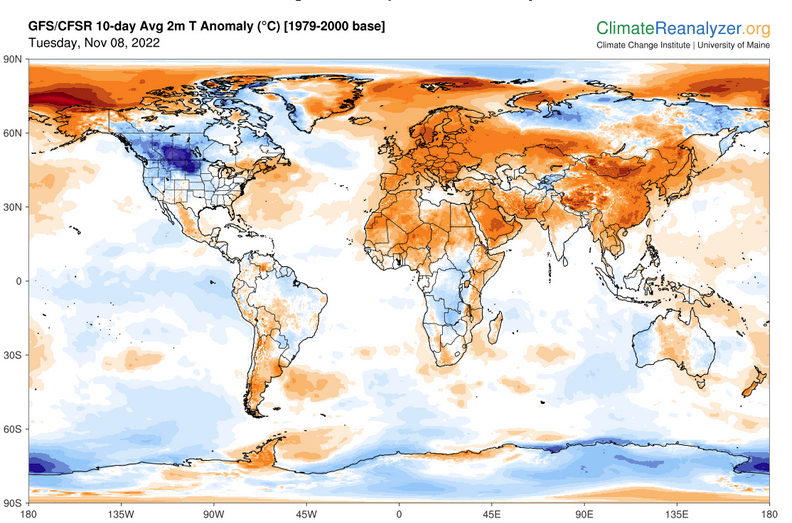 Month to Date Information
Month to Date Information
Month to date Temperature can be found at https://hprcc.unl.edu/products/maps/acis/MonthTDeptUS.png
Month to date Precipitation can be found at https://hprcc.unl.edu/products/maps/acis/MonthPNormUS.png

